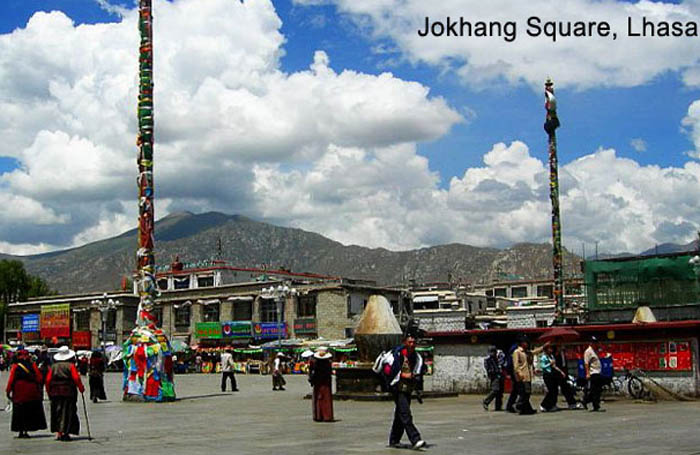 Dharamshala: China has claimed that it is investing $4.8 billion to make Lhasa, the capital city of Tibet, a commercialized tourist hotbed.
Dharamshala: China has claimed that it is investing $4.8 billion to make Lhasa, the capital city of Tibet, a commercialized tourist hotbed.
Construction is said to have begun on the multi-billion dollar project which will include a theme park, commercial district and residential area and will most likely be completed within three to five years.
The first phase of the project, about 2km (just over a mile) from downtown Lhasa, has been initiated.
The Jokhang Temple, one of Tibet's holiest shrines, was the site of the self-immolation protest by Dhargye, 25, and Dorjee Tseten, 19, on May 27. The so called Lhasa Vice-Mayor Ma Xinming was of the opinion that the project, which is spread across 800 hectares (1,980 acres), would create a "living museum" for Tibetan culture as well as reduce tourist pressure on the temple, situated in old Lhasa.
The project would also include attractions themed around Princess Wencheng of China's Tang dynasty, one of the many royal princesses betrothed to Songtsen Gampo, the great 33rd king of Tibet.
The previous month, China announced plans to invest 400 million yuan to propagate tourism in Nyingtri, southeastern Tibet, known for its natural beauty.
The development authorities feel that tourism is crucial for Tibet's economic future and as such, the recent tourism-oriented investments have been undertaken to attract 15 million tourists a year by 2015 and to generate approximately 18 billion yuan.
After the 2008 peaceful uprisings and the ongoing wave of self-immolations, during which more than 40 Tibetans set themselves on fire in all traditional provinces of Tibet, the entire so called Tibet Automous Region has regularly faced bans on foreign visitors, journalists and international observers.
The current ban has been estimated to last until November, with reports of travel agencies cancelling holiday packages to the region for the rest of the year.
According to many Tibet support organizations, the Chinese government is indulging in arbitrary and systematic religious persecution and cultural assimilation in the name of economic development.
This is not the first instance of China banning foreign tourists from visiting Tibet. Even with sanctioned permissions, a close watch is kept on tourist activity within the area. Visitors need to apply for a special kind of visa and are accompanied by government-appointed guides. Foreign tour operators are only allowed to make their arrangements via Chinese set-ups.


![Tibet has a rich history as a sovereign nation until the 1950s when it was invaded by China. [Photo: File]](/images/stories/Pics-2024/March/Tibet-Nation-1940s.jpg#joomlaImage://local-images/stories/Pics-2024/March/Tibet-Nation-1940s.jpg?width=1489&height=878)















